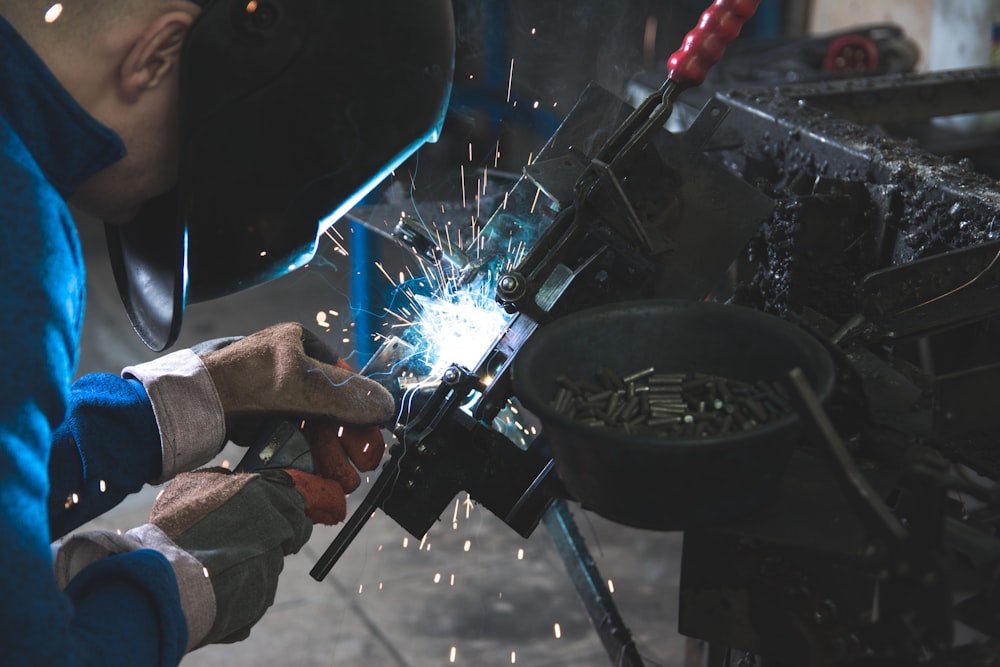If you’re not sure which buffing wheel to buy, this article can help you narrow down your options. Here we’ll take a look at the various buffing wheels out there and discuss which materials work best with each.
Whether you’re a seasoned metalworker or just starting with woodworking as a hobby, we’ll break down the characteristics and benefits of each buffing wheel type so you can choose the best one for your needs.
We will also discuss how to keep your buffing wheel in good condition so that it can be used for many more jobs. Whether you’re just starting or have years of expertise under your belt, we hope you’ll find something useful today!
How Do I Choose A Buffing Wheel?
There are many different buffing wheels to choose from. When buying one, you should focus on how hard and stiff it is. The sisal wheel, on the coarse end of the spectrum, can be contrasted with the cotton flannel wheel, on the fine end.
They come in a wide variety of shapes and sizes and can be as rigid as a stitched or felt pad or as flimsy as a looser pad that generates less heat and pressure when you press on it. Keep in mind that you will likely need to use more than one buffing wheel per polishing session, as this is the single most significant consideration when making your final decision.
So, you probably won’t use every buffing wheel in your collection on a single project, but you’ll almost always go from coarse to fine wheels as you move through finer compounds. With this information, it should be easy to find the right combination of buffing wheels and compounds. Just remember that you’ll need to switch wheels whenever you switch compounds.
Depending on the compound you use with them, buffing wheels have a range of responsiveness and performance. To help you choose the buffing or polishing wheel that is right for you, we’ve compiled a list of the most common varieties. Because in the end, what’s important is that you have your hands on the buffs and compounds that are ideal for you and your endeavours.
Before you choose a wheel, think about the material you’ll be working with, the polish you want, and the size and power of the buffing machine.
- Buffer wheels are available in a variety of sizes to accommodate a wide range of materials. Sisal wheels are ideal for cutting and polishing metal, whereas cotton wheels excel at the same tasks with softer materials like wood.
- Success Intended: The final result will also affect the choice of buffing wheel. A high-gloss surface can be achieved with a loose cotton wheel, while a matte finish can be achieved with a sisal wheel.
- Specifications for a Buffing Machine: Choose a buffing wheel based on the size and power of your buffing machine. A stronger machine needs a more robust wheel, and a larger machine needs a bigger wheel.
Safe use of the buffing wheel entails not only always mounting the wheel correctly and making sure protective gear like gloves and goggles are used, but also thinking about how the wheel will be used. Also, make sure you read the manufacturer’s instructions and follow them to the letter. If you’re not sure which buffing wheel to buy, it’s best to ask an expert or the manufacturer for advice.
Buffing Vs. Polishing: What’s The Deal?
In the manufacturing sector, buffing and polishing are two popular forms of final finishing. They are very similar because they both involve smoothing the surface of a piece of work to make it look better and work better.
People often confuse buffing with polishing, although the two processes are distinct. There are distinctive qualities to every type of finishing method. So, could you perhaps explain the distinction between buffing and polishing?
Buffing is the process of smoothing out a surface and bringing back its original high shine by using a buffing wheel with a loose abrasive compound. The abrasive compound is put on the buffing wheel, which is then spun at high speeds and rubbed against the material’s surface to remove defects and produce a smooth finish.
In comparison, polishing involves bringing out a surface’s natural sheen and gloss with the use of a polishing wheel and a fine abrasive substance. To achieve a glossy, mirror-like finish, an abrasive compound is put on a spinning polishing wheel, which is then rubbed against the surface of the material at high speed.
Polishing makes a surface shiner, while buffing is more forceful and gets rid of flaws on the surface. Buffing and polishing are frequently used together to get the best possible result when finishing a material. Choosing the right buffing or polishing wheel and abrasive compound for the material can make a big difference in the result.
Different Types Of Buffing Wheels
There are many different kinds of buffing wheels, and each has its pros and cons. Among the most typical are:
Sisal Buffing Wheels
Buffing wheels constructed from sisal or hemp are one type of natural fibre abrasive. The abrasive qualities of these wheels make them ideal for cutting and polishing tough materials like metal. They are excellent for removing scratches and other flaws from hard materials and are more aggressive than other types of buffing wheels.
Cotton Buffing Wheels
Buffing wheels manufactured from cotton fibres are one kind of wheel that can be used for this purpose. These wheels are great for polishing wood, plastic, and painted surfaces because they are soft and easy to bend. Various wheels are ideal for producing a mirror-like sheen on these materials, and they are gentler than sisal wheels.
Muslin Buffing Wheels
Buffering wheels constructed from muslin fabric are known as muslin buffing wheels. These wheels are commonly used to polish and finish metal because of their longevity and consistent finish. They produce a finer finish with less aggression than sisal wheels.
Spiral-sewn Buffing Wheels
A “spiral-sewn buffing wheel” is a buffing wheel made from several layers of fabric that are sewn together in a spiral pattern. These wheels are built to last, so they’re put to work in demanding situations like polishing huge pieces of metal or eradicating severe blemishes. They can handle more stress and wear than regular buffing wheels without losing their smooth surface.
Loose-leaf Buffing Wheels
To create a loose-leaf buffing wheel, a hub is used to hold a large number of fibres or leaves that radiate forth from the hub. Muslin, cotton, and sisal are common examples of materials used to make such fibres, and they come in a wide range of combinations.
These wheels can be used to polish and finish a broad variety of materials, from metal and wood to plastic and painted surfaces. Compared to other buffing wheels, they are gentler and produce better results when used on certain materials to bring out their natural shine.
Diamond Buffing Wheels
There are two types of buffer wheels: those with a plastic core and those with a metal core that is covered with diamond particles. These wheels are commonly used to polish and finish hard materials including glass, ceramics, hard metals like carbide, steel, and even diamond itself due to their excellent durability and cutting power.
A high gloss can be achieved with either a wet or dry application of diamond buffing wheels. They are highly powerful and can be used to get rid of things like scratches and even substantial burrs on a surface.
It is also vital to consider the size and power of the buffing machine you will be utilizing when deciding on the type of buffing wheel to use. If you’re not sure which buffing wheel to buy, it’s best to ask an expert or the manufacturer for advice.
Conclusion
Different kinds of buffing wheels, made from various substances, have certain advantages and disadvantages. You should think about the compound you’ll be using, the material you’ll be buffing, and the desired finish before settling on a buffing wheel.
Safety measures and routine maintenance of the wheel are also crucial. You can get a professional-looking shine on any material by using the appropriate buffing wheel.
To learn more about buffing wheels, go to buffing wheel for angle grinder.


Leave a Reply